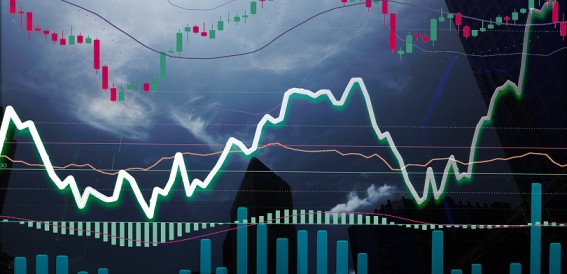Understanding a company’s financial health is crucial before investing in its stock. Financial ratios are powerful tools that can condense complex financial data into easy-to-grasp metrics. By analyzing these ratios, investors can gain valuable insights into a company’s profitability, efficiency, and risk profile.
This knowledge can then be used to make informed investment decisions and build a stronger portfolio. Let’s delve into some of the key financial ratios that every stock investor should know.
Topics Covered :
- Financial Ratios that Every Stock Investor Should Know
- Return on Equity
- Return on Assets
- Profit Margin
- Dividend Payout Ratio
- Conclusion
Financial Ratios that Every Stock Investor Should Know
P/E Ratio
The price-to-earnings (P/E) ratio is a cornerstone in financial ratio analysis. This pivotal ratio allows investors to gauge a company’s valuation by comparing its current share price to its earnings per share.
- Interpreting the PE Ratio : A lower PE ratio is crucial for investors, suggesting that the stock may be undervalued and potentially a good buying opportunity. Conversely, a higher PE ratio suggests that the stock is overvalued.
- Investment Strategy Implications : Investors utilize the P/E ratio to decide when to enter or exit a stock. It helps understand the market’s valuation of a company’s earnings.
- Sector Comparison : The P/E ratio also facilitates comparisons across different competitors within a sector, providing insights into which stock may be overvalued or undervalued at any given time.
P/EG Ratio
The Price/Earnings to Growth (P/EG) ratio takes the traditional PE ratio further by factoring in a company’s expected earnings growth rate. This allows for a more refined analysis of a stock’s valuation.
- Growth Perspective : By including expected earnings growth, the P/EG ratio offers a more dynamic view of a stock’s future potential.
- Value Indicator : A P/EG ratio below 1 is typically seen as an indicator of an undervalued stock relative to its expected growth.
- Balancing Act : The P/EG ratio helps investors balance their portfolios between high-growth (but potentially overvalued) stocks and those that may offer steady growth at a reasonable valuation.
P/S Ratio
The Price-to-sales (P/S) ratio compares a company’s market capitalisation to its total sales over a designated period. This ratio is especially useful in scenarios where companies are not yet profitable but show growth potential.
- Valuation Insights : A lower P/S ratio might suggest that a company’s stock is more attractively valued relative to its sales, offering an entry point for investors who see potential in its revenue-generating abilities.
- Non-Profitability Context : The P/S ratio provides a way to evaluate investment attractiveness based on sales performance alone for companies in the growth phase without net profits.
- Market Sentiment Indicator : The P/S ratio can often reflect the market’s sentiment towards a company’s future growth prospects based on its sales figures, serving as a proxy for investor confidence.
Additionally Read: What is Demat Account?
Begin your investing journey today. Your Demat account is the first step.
P/CF Ratio
The price-to-cash flow (P/CF) ratio is an essential tool in financial ratio analysis, providing a lens through which investors can evaluate a company’s financial health vis-à-vis its cash generation capabilities. The PCF ratio focuses on the company’s cash flow, offering a grounded perspective on its operational efficiency.
- Key Insights : The P/CF ratio indicates how well a company manages its cash flow relative to its market valuation. A lower ratio indicates significant cash generation compared to its market price, potentially signaling an undervalued stock.
- Investment Decision-Making : A favorable P/CF ratio suggests a company is financially robust, often making it a more secure investment, especially in volatile markets.
- Comparative Analysis : When used with other financial metrics, the PCF ratio helps investors identify profitable companies that are also efficient cash generators, supporting sustainable growth.
P/BV Ratio
The price-to-book value (P/BV) ratio tells if a company’s stock is priced fairly relative to its book value. This financial ratio identifies potential investment opportunities by highlighting discrepancies between a company’s market value and its asset-based valuation.
- Assessing Valuation : A P/BV ratio under 1 often indicates that a company’s stock might be trading below its intrinsic value based on its assets.
- Strategic Investment : The PBV ratio is particularly relevant for companies in asset-intensive industries, where the underlying value of assets plays a crucial role in the company’s overall valuation.
- Risk Assessment : Excessively high P/BV suggest overvaluation and increased investment risk.
D/E Ratio
The debt to equity ratio is a pivotal financial ratio scrutinizing a company’s capital structure, specifically examining how its total liabilities stack up against shareholders’ equity. It’s a barometer indicating how much of the company is financed by debt versus equity.
- Financial Leverage : A lower debt to equity ratio signifies a healthier balance between debt and equity financing.
- Risk Evaluation : Investors use this ratio to assess the risk associated with a company’s financial structure. Higher ratios may indicate a company is aggressively leveraging debt, increasing financial risk.
- Sector Comparisons : Considering industry norms when evaluating D/E ratios is important, as acceptable debt levels can vary significantly across different sectors.
Return on Equity
Return on Equity (ROE) is a critical measure within financial ratio analysis, offering insights into a company’s capability to generate earnings from its equity base. It reflects how well a company uses the investments made by its shareholders to generate income.
- Efficiency and Profitability : ROE directly indicates a company’s efficiency in using shareholder funds to generate profits. Higher ROE values suggest that a company is adept at converting the equity invested in it into significant profits, thus indicating strong managerial efficiency and a potentially lucrative investment opportunity.
- Comparative Benchmarking : Investors often use ROE as a benchmark to compare the financial performance of companies within the same industry, identifying those with higher profit-generation capabilities.
- Investment Decisions : A consistently high ROE not only highlights a company’s growth potential but also reassures investors about the sustainability of its business model and profitability.
Return on Assets
Return on assets quantifies how proficiently a company can convert its assets into net income. This ratio is pivotal in assessing a company’s operational effectiveness and ability to utilise its asset base efficiently.
- Asset Utilization : ROA offers a clear window into how effectively a company’s management uses its assets to generate earnings. A higher ROA indicates that the company is managing its assets efficiently to produce profits.
- Sector-Specific Insights : The significance of ROA can vary across different sectors, with asset-heavy industries typically exhibiting lower ROA figures due to their substantial investment in assets.
- Strategic Planning : Companies with higher ROA figures are often better positioned for strategic investments and growth as they can efficiently leverage their assets for revenue generation.
Additionally Read: What is Online Trading?
Profit Margin
The profit margin ratio measures the profit a company retains from its total revenue after covering all its expenses, offering a snapshot of its financial health and cost management prowess.
- Cost Control : A higher profit margin indicates a company’s success in maintaining cost efficiency, ensuring a larger portion of revenue is retained as profit.
- Sector Performance Comparison : Profit margins are also used to compare companies within the same industry, highlighting those with superior cost management strategies.
- Growth Indicator : Consistently high profit margins may signal a company’s strong market position and ability to scale operations effectively while maintaining cost efficiency.
Dividend Payout Ratio
The dividend payout ratio is a crucial financial ratio for income-focused investors. It measures the proportion of net income a company pays out to its shareholders in the form of dividends.
- Dividend Sustainability : A manageable dividend payout ratio suggests that a company can sustain its dividend payments over time, an important consideration for investors relying on dividend income.
- Reinvestment vs. Distribution : This ratio also helps investors understand a company’s policy regarding profit distribution versus reinvestment back into the business, indicating its growth and income priorities.
- Income Stability : A consistent and sustainable dividend payout ratio assures regular dividend income for investors seeking stable income.
Conclusion
For new investors, mastering these financial ratios can significantly enhance their ability to make informed decisions. These serve as the foundation for a potent financial ratio analysis toolkit, enabling the assessment of investment opportunities with greater confidence and precision.
To navigate stock investments effectively, understanding key financial ratios is crucial. Simplify your journey by accessing resources that elucidate these ratios and consider demat account opening for streamlined stock management.











